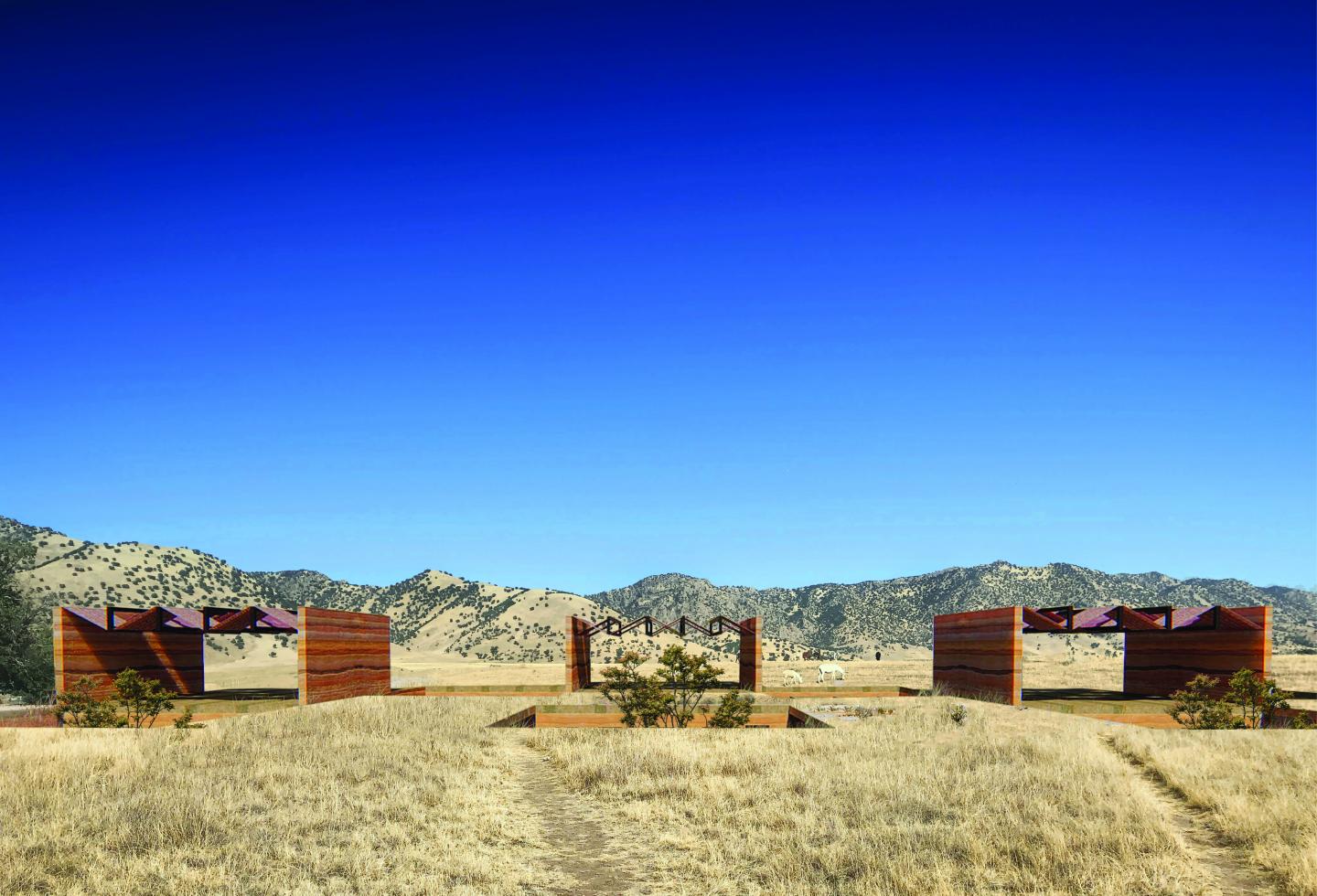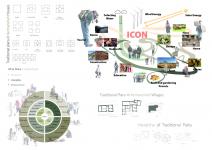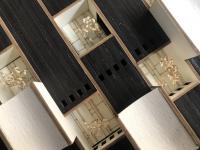The main challenge in designing ”a house for a teacher” was to create an architectural and generalizable plan to earthquake-stricken and deprived areas, which, in its simplicity in design and implementation, in addition to providing functional requirements, regarding space creating and caring about the spiritual dimension of its users, it has been contemplating even more than the physical needs.
.
Rural children hear in a house for a teacher that, «Treasure is under their own foundations».
The earthquake phenomenon is one of the most unexpected and painful natural disasters. In the recent earthquake tragedy that targeted the Kermanshah province of Iran (November 21, 2017), the highest percentage of destruction and displacement has been reported related to villages and inexpensive, non-normative corporate houses. Areas that struggled problems like rural poverty before the event, too.
Our main challenge in designing «a house for a teacher» was to create an architectural and generalizable plan to earthquake-stricken and deprived areas, which, in its simplicity in design and implementation, in addition to providing functional requirements, regarding space creating and caring about the spiritual dimension of its users, it has been contemplating even more than the physical needs.
The relationship between man and the environment is a dynamic and mutual relationship, and the landscape plays a key role in improving the quality of human life. Human, environment and communication are three important and basic factors of the relationship between man and the environment. Therefore, establishing an effective dialogue between the architecture and the wilderness that the specified sites had provided for us, took the priority to our design.
Since in the concept of the development of social sustainability, we face providing people›s satisfaction at the minimum level of basic needs with satisfying their needs and increasing the community›s ability to improve their own state, several key parameters, including:
Diversification of the rural economy;
Increase job diversification,
Out of the field activities,
Expansion of native culture,
Protection of natural landscape,
Handicraft development,
Economics viability of the project;
were raised in the next priorities of the plan to confront the ural poverty dilemma in order to achieve sustainable rural livelihoods.
With this intellectual background for design, «architecture as media,» our proposal is to respond to the upcoming issue.
The phrase «rural children hear in a house for a teacher that the treasure is under their own foundation» is a belief that not only in these children but in the minds of all people must be believed. Therefore, architecture as an advertising media will lead this belief to come true.
Our teacher›s house will become an icon, which will invite people to its village through all mass media and will ask tourists to familiarize their people, their culture and their skills by traveling there.
In this house, the school of teaching and exchanging practical skills between the child and the tourist in the spaces that are contrived as workshops, are prioritized toward teaching science topics.
The process of training the creation of indigenous products and handicrafts will be an opportunity to exhibit and use them in rural homes, which host tourists, and the transformation of homes and residences into the gallery of school products. The school building, as icon, will go all the way along with the products, and will be a sign to make the overall outlook of the form addressable, in its natural context. This will cause the requiring attractiveness for curiosity and exploration to be possible in the nature of the building by a simple adaptation between icon and the building, created by the minds of tourists, , and virtual communication between villagers and their skills and tourists take the flavor of reality. Workshops will welcome guests who are willing to observe or even learn the way of making handicrafts, or even buy it at the final stage. Throughout this path, the building will act as a propagandist media toward advancing economic goals, and tourists and visitors, as human capitals of the growth and development of this method of planning, will also create a new definition of the way of economic growth along with continuing education in schools.
To build this house-school, several basic issues were taken into consideration during the construction process. The first issue was the use of local force as the user›s involvement in the process of building will increase the sense of life and hope in them, and they will also have more company and solidarity with newly constructed building.
Customization of materials, reduction of construction costs, and utilization of a construction method that could moderate the region›s highly variable climate effects (the maximum temperature in the summer has been announced + 44 ° C and the minimum winter temperature has been announced between -15 ° C and -18 ° C, according to the weather report of the area), was among other things we were concerned.
The most available element in this area is the soil, which is close to the red according to the collected images in most parts.
Therefore, the use of rammed earth wall seems to be the most appropriate method of construction. This method, in addition to being derived from the nature of its bed, has a high speed and strength in construction. Also it does not require the experts and advanced equipment for its implementation, and the strength of the workers themselves and the accumulation of soil is sufficient for compression. For formatting, the multi-layer waterproof board and steel pressure members that create a smooth surface, can be used. Then, to remove the wall shrinkage and to achieve the desired resistance, by removing some clay, these modification together let more accurate joins between walls and other building components to be formed and a glamorous look to be created.
This method despite the minimizing environmental impacts, due to the use of environmentally compatible materials can also be repaired and, if damaged, can be quickly regenerated, while its thermal storage is high and have the capability of resistance in this wide temperature range during the year of this area.
By this method, the costs of transporting materials and recruiting of force and specialized equipment can be eliminated, while at the same time using local labor, which is considered an some kind of entrepreneurship, because in addition to hiring native force, it will be a practical workshop for training the new construction method and a replacement of the traditional methods, which besides being easy to handle and protection it is also more durable than previous methods, and is a way to prevent the re-occurrence of disasters causing by earthquake. Also, the size of the excavation proposed in the design will also be justifiable.
The tent roof used in the ceiling are also inspired by black nomadic tents. Considering that the people of this area were formerly nomadic, using this method to shelter will be a sweet association in their memories, also that instead of using black tent, the cloth used on the roof is of their handicrafts that is another type of the participation of local people in building construction.
Hoping to the day that all Iranian architects, especially the younger generation, are seeking to discover the potential of nature and culture in the deprived areas of the country to create scientific and practical architectural solutions to end this decline process and turn it into a turning point in stepping into the path of progress.
Converting constraints into opportunity will not be possible except through efforts, empathy and national effort!
2018
0000
Locatioan : Kermanshah, Iran
Site Area : 1500 Sq.m
Built Area : 350 Sq.m
Status : Unbuilt
Project Year : 2018
Architect : AA Design Studio IR
Author Architect : Amirabbas Aboutalebi
Design Team : Farnoosh Bandi, Amir Ali Toussi, Hosein Mosavi












